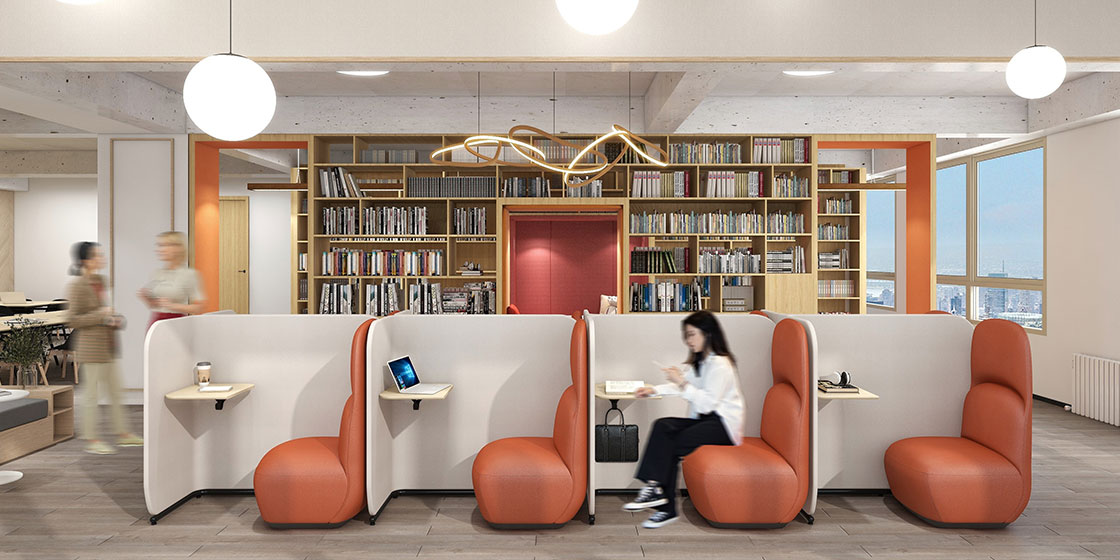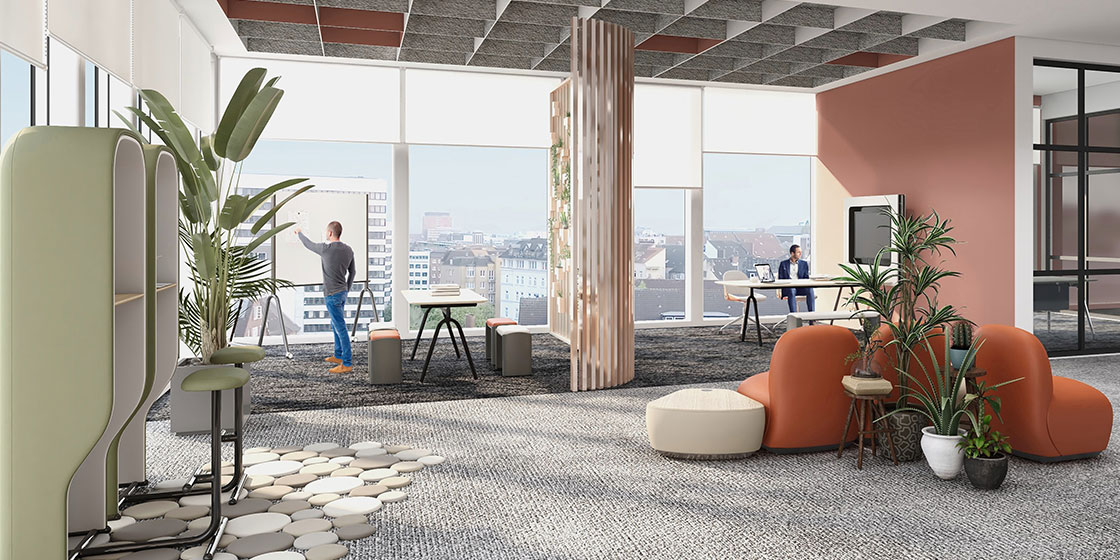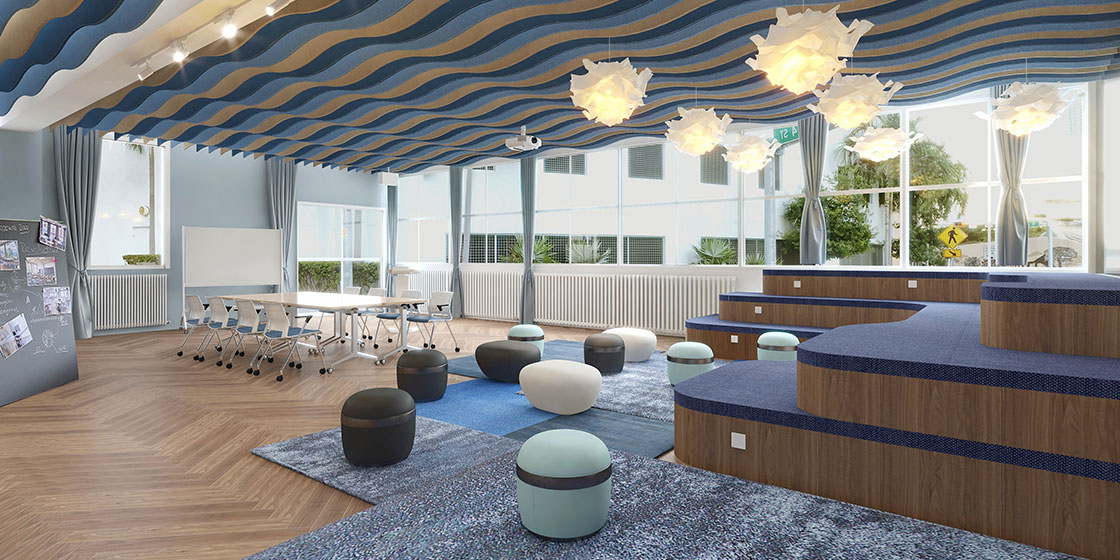
Creating an inspiring and productive workplace has an art and science behind it. While the art part encompasses the aesthetics and the feel-good factor about a space, design choices based on science can make a workspace truly great.
The most significant influence on future buildings will be the combination of neuroscience and architecture. The science behind certain workplace designs can quickly enhance your working environment. So, how can you turn an unappealing and ineffective workplace into something more attractive and productive? Here are a few simple, science-backed design ideas to help you boost workplace happiness and productivity.

Green Spaces
The presence of office plants has been demonstrated in several studies to provide a variety of advantages, including assisting workers in recovering from strenuous tasks. According to research on productivity, people respond 12 percent quicker on computer tasks when plants are around. Green spaces also help reduce anxiety, depression, and fatigue among people.
Noise Control Sound Masking
The ideal noise level for productivity is at around 70 dB. This is the right amount of sound to encourage creative creativity, while too much noise or quiet may both be detrimental. Sound masking has been shown to enhance productivity by up to 38% and reduce stress by up to 27%. Speakers with white noise and acoustic furnishings are both good options for keeping noise in check.
Collaborative Spaces
Socializing is essential for effective teamwork. According to research, substituting digital contact for face-to-face connection raised depression rates. People's emotional well-being is also improved by teamwork, and happy employees are up to 20% more productive. To promote more critical interactions in collaborative settings, consider adding a cluster of tables for group work and comfy seating at favourable angles.

Ceiling Height
According to research, higher ceilings boost performance and improve conceptual thinking. Lower ceiling areas, on the other hand, have been advocated for in order to assist our mathematical reasoning. Consider going higher if you want to do more expansive work, or go lower if you want to do more concentrated and confined work.
Space and Distance
It's difficult not to feel claustrophobic in cubicle spaces. According to research, workers in open-plan environments with no walls experienced a 20-32 percent increase in physical mobility at work. They also had reduced stress levels. The distance between co-workers’ desks is also important. You are far less likely to talk to someone if you sit more than an 80-foot walk away from them on a regular basis than if you sit nearby.
Active and Rounded Furniture
Active furniture such as sit-stand workstations, adjustable desks, and bike desks, can assist employees to maintain a healthy lifestyle and lowering blood pressure. A study showed that people evaluated curved, rounded furniture as more welcoming than straight-edged rectilinear furniture, and the rounded areas stimulated higher activity in reward and aesthetic appreciation brain regions. Not only will rounded products increase your creativity, but they will also save you from pointy furniture corners.

Lights, Air and Temperature
In the office, the temperature, air quality, colors, and lighting all have an impact on focus and productivity. Because various colours and light levels have different psychological impacts, installing a lighting system that allows you to change the colour and brightness of your space to suit the type of job you're doing is the right solution. Natural light is also a powerful energy enhancer.
According to some scientific research, productivity peaks around 72 degrees Fahrenheit (22 degrees Celsius) room temperature. Purifiers and fans can help you operate in a cleaner environment while also minimizing the risk of respiratory ailments and allergy symptoms.